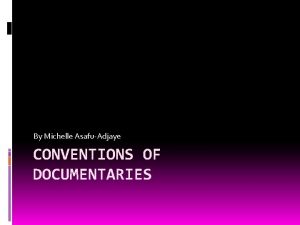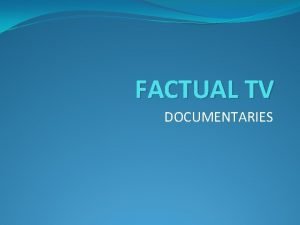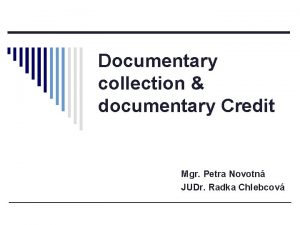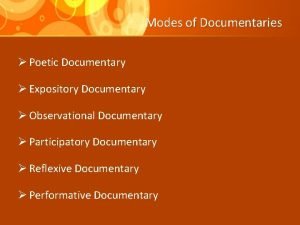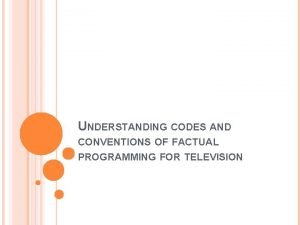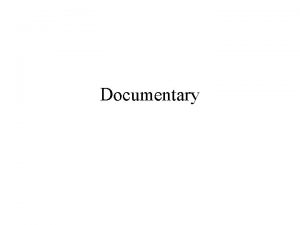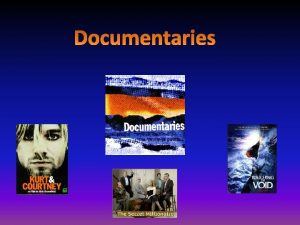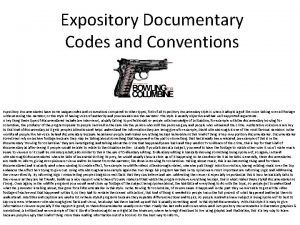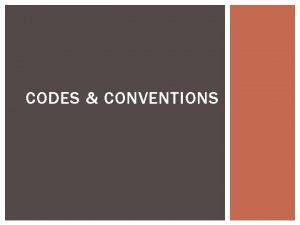FACTUAL TV DOCUMENTARIES Documentary Conventions The conventions of






- Slides: 6

FACTUAL TV DOCUMENTARIES

Documentary Conventions �The conventions of a documentary are what the audience expect from it. Normally a documentary should be non-fiction, un-staged and based on real events. �Certain aspects of the documentary are used to place the audience in the action. These can include: location shooting, handheld camera work, natural lighting, interviews, synchronous sound recording and the filmmakers visible presence in the documentary.

Documentary Types �Documentaries each fall into their own type. Some examples of documentary types are: � Ethnological – a documentary that looks at the culture of a particular group in an analytical fashion. � Drama-Documentary – a documentary that dramatizes an event. � Investigative – most common type of documentary which tends to introduce a problem and then go on to solve it.

Documentary Mode �The mode of a documentary determines what kind of programme it is. The most common modes of documentaries are: Expository, Observational, Participatory, Reflexive and Performative. � Example – Performative: Some of the conventions that this mode includes are archive footage, natural lighting and material which is shaped into a narrative. The documentary maker becomes involved in the programme by commenting on it and physically appearing in it. The documentary addresses the audience in a direct and emotional way.

Kurt and Courtney � ‘Kurt and Courtney’ is a performative documentary directed by Nick Broomfield in 1998. � The director narrates the documentary as well as appearing in front of the camera as he interviews people. Close-ups are used on the interviewees to show emotion through facial expressions. � The documentary included lots of archive footage, for example: photographs of Kurt and evidence of his suicide note, as well as sound recordings of phone calls. � Nick Broomfield talks through out the film about some issues that occurred in the making of the documentary like not be allowed to use any Nirvana songs.

Filming Techniques for interviews. . . • The introductory shot usually films the interviewee doing something other than being interviewed. • A general view shot is a wide shot to show where the action is taking place. • Cutaways are useful if you want to shorten the interview down. They are used to cover up jump cuts and keep continuity. They ‘cutaway’ to a new shot. � An episode of Secret Millionaire uses introductory shots in the opening sequence because they are used to show a shot of a person doing something before being interviewed. For example, the key protagonist in Secret Millionaire is shown working in a chip shop before he is interviewed about his profession. Also used in the opening sequence are general view shots to establish the location where the action was taking place.
